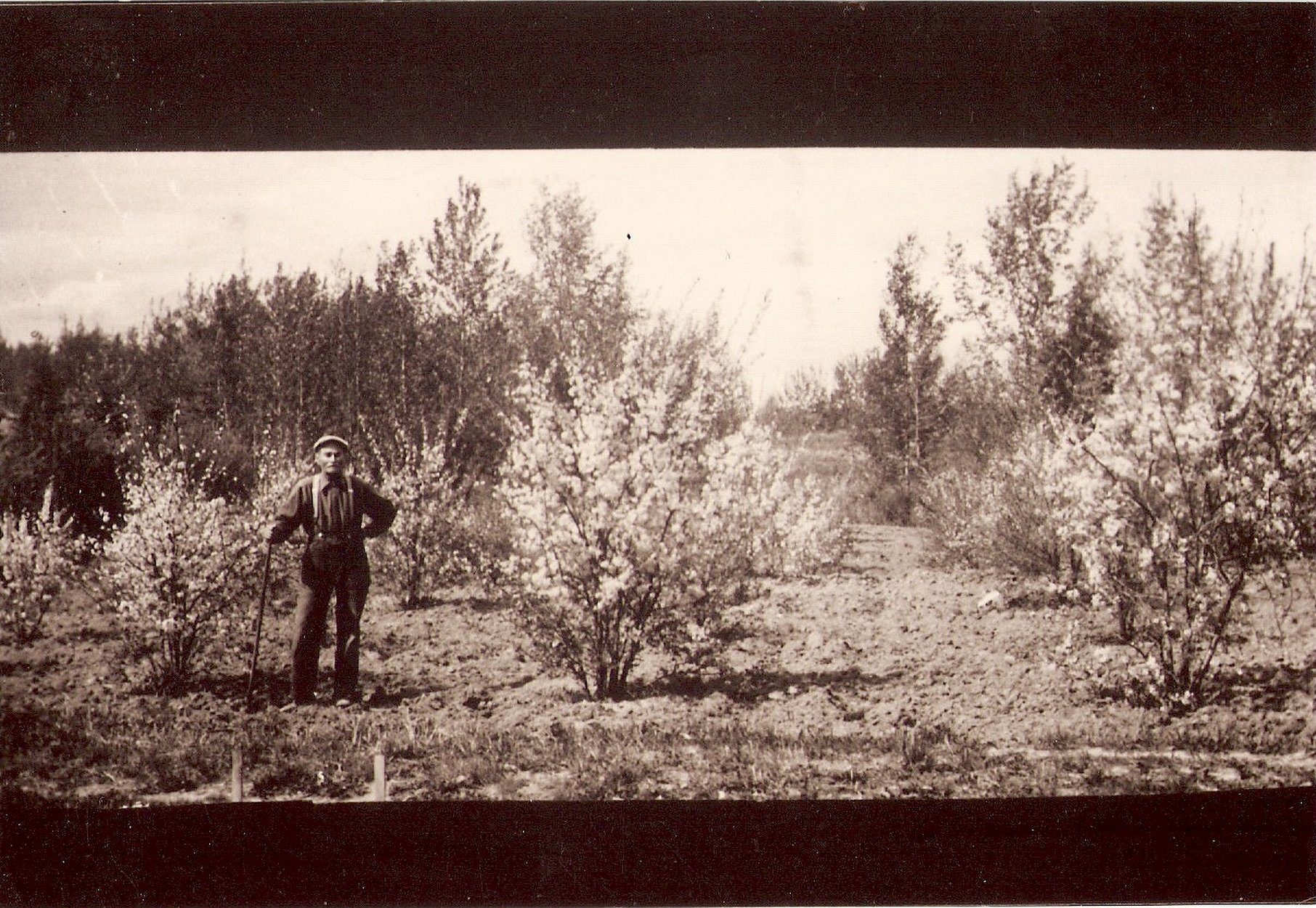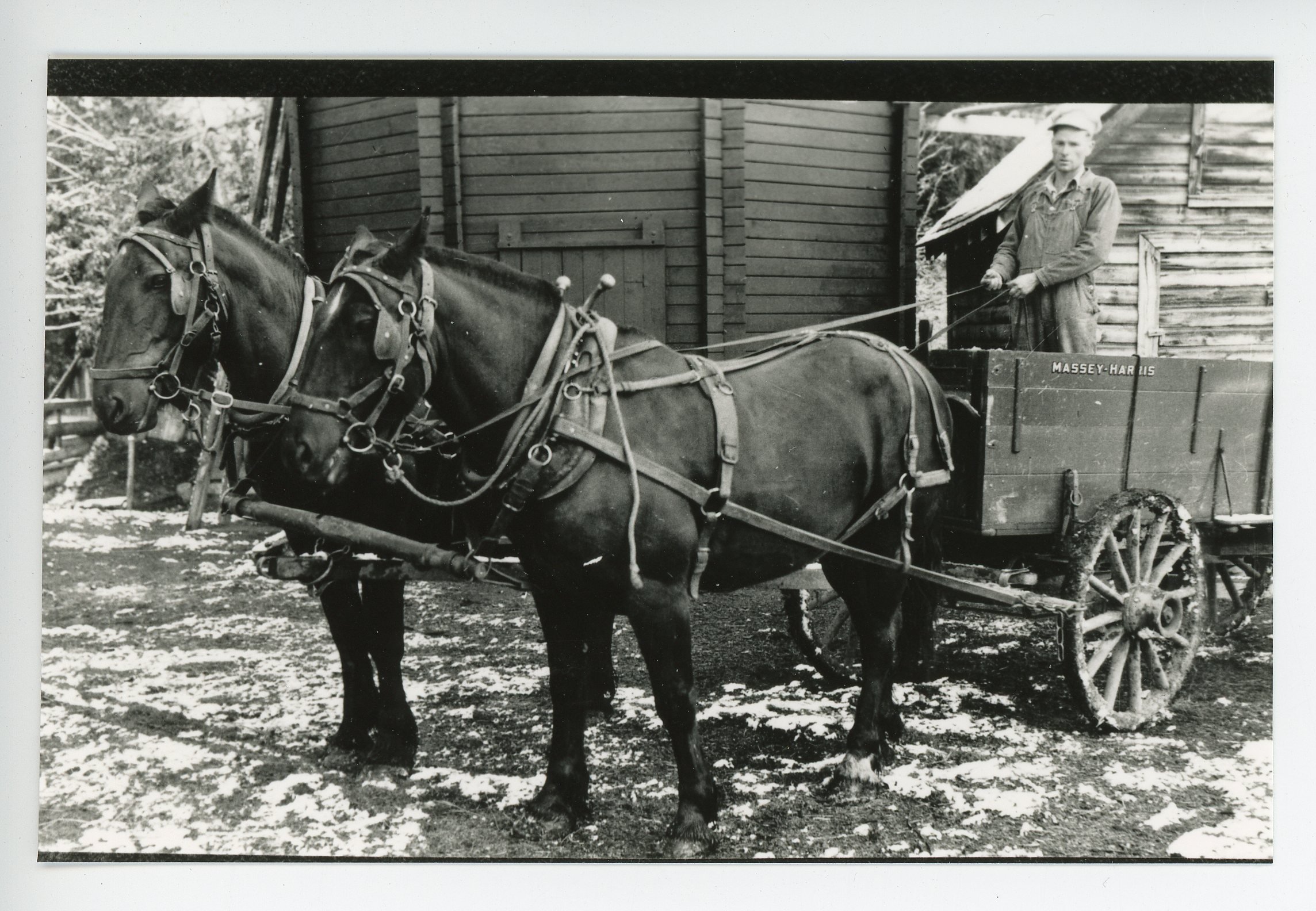About George Pegg
George Pegg was a pioneer botanist/taxonomist of west central Alberta. His family developed a homestead, which George continued to farm after the death of his parents. George became very interested in birds and plants, and made major contributions to the field of Botany with his many first-time-in Alberta identifications of plant species, massive pressed plant collection, large library of botanical books, plant findings which led to the theory of 'glacial refugia' in the Rockies, and development of a unique Garden.
George Pegg was born in Toronto, Ontario, in 1910, the second in a family of eight children. The Pegg family moved from Ontario in 1911, and landed in Red Deer. Due to crop failure the family moved again, this time to Edmonton where George’s father, Fred Pegg Sr. Pegg met up with David Duff, a landowner near Glenevis. He told Fred Pegg Sr. of an abandoned quarter of land there. In March of 1913, then moved to Glenevis.
Fred Pegg Sr. was very interested in growing things and was the first person in the Glenevis area to grow alfalfa. George's interest in horticulture and nature was implanted early in life. George spent his early childhood playing outdoors and often wandered out in the bush to play in the water ponds. The Pegg boys were nature lovers from early childhood and soon became particularly interested in birds. Every June 1st the boys would go on a bird count, and would compare notes at night when they arrived home. The boys also kept migration records and took a course in taxidermy through the mail, mounting several animals.The Peggs built a new house in 1929, and the first row of spruce trees along the west side of the garden was planted. George later added more spruce and eventually more varieties of evergreens, tamarack, and etc. to form a very effective windbreak.
After this time, George spent much of his time criss-crossing the States and Canada job hunting and observing and identifying birds and plants.
George became interested in the weather, so in 1945 he set up a weather station. He took daily high and low temperature readings, as well as precipitation. He fed birds in the winter and they became so tame that chickadees often fed out of his hand.
George and his family kept identification and migration record of all birds sighted since the 1920's and had identified 180 species. On his free time George became very frustrated while trying to identify the wild plants of the countryside. He would press the plant of herbarium specimens to serve as records of his observations. Plants that he could not identify with the aid of his books, he took to the University of Alberta. This is where he met Dr. Ezra H. Moss. Pegg's contribution to the understanding of the diverse Alberta flora was notable. Of particular importance was the discovery by George Pegg of an area that had escaped the glacial scrubbing eradication of earlier plant life that took place during the last ice age. As a result of George's involvement, the Flora of Alberta, when it was published in 1959, was expanded by more than 100 species. Pegg's collection recorded in this paper extended the known ranges of more than 50 species in Alberta.
George lived with the company of his plants and books in the homestead that was his home for nearly 70 years, shunning any technology more advanced than a wood-burning stove.









